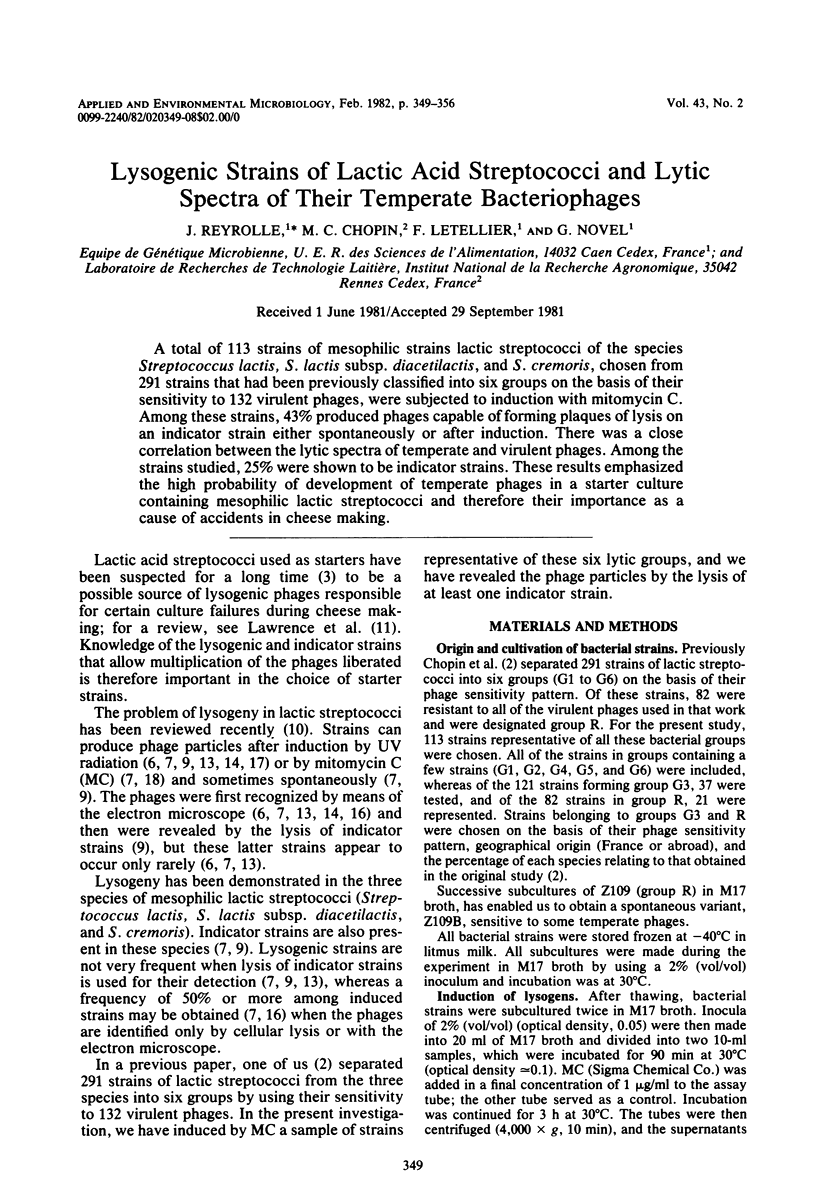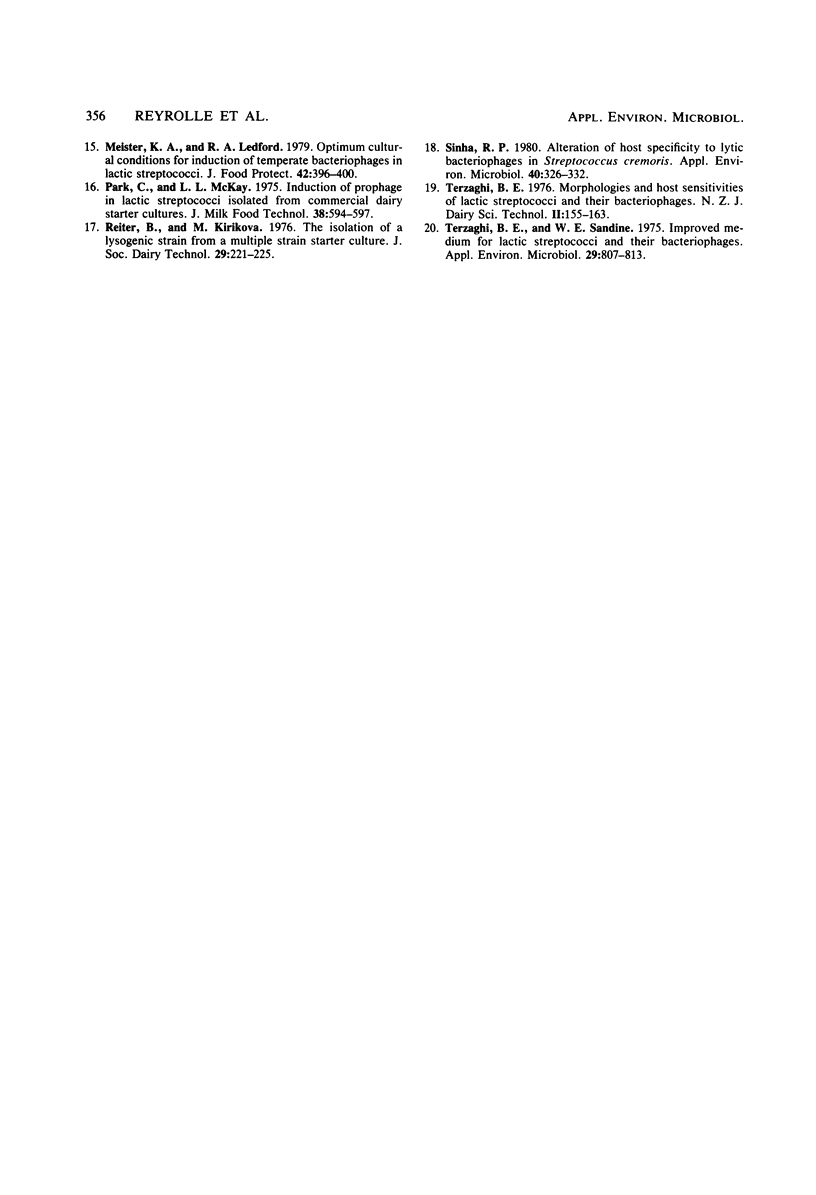Abstract
A total of 113 strains of mesophilic strains lactic streptococci of the species Streptococcus lactis, S. lactis subsp. diacetilactis, and S. cremoris, chosen from 291 strains that had been previously classified into six groups on the basis of their sensitivity to 132 virulent phages, were subjected to induction with mitomycin C. Among these strains, 43% produced phages capable of forming plaques of lysis on an indicator strain either spontaneously or after induction. There was a close correlation between the lytic spectra of temperate and virulent phages. Among the strains studied, 25% were shown to be indicator strains. These results emphasized the high probability of development of temperate phages in a starter culture containing mesophilic lactic streptococci and therefore their importance as a cause of accidents in cheese making.
Full text
PDF







Selected References
These references are in PubMed. This may not be the complete list of references from this article.
- Barksdale L., Arden S. B. Persisting bacteriophage infections, lysogeny, and phage conversions. Annu Rev Microbiol. 1974;28(0):265–299. doi: 10.1146/annurev.mi.28.100174.001405. [DOI] [PubMed] [Google Scholar]
- Chopin M. C., Chopin A., Roux C. Definition of bacteriophage groups according to their lytic action on mesophilic lactic streptococci. Appl Environ Microbiol. 1976 Dec;32(6):741–746. doi: 10.1128/aem.32.6.741-746.1976. [DOI] [PMC free article] [PubMed] [Google Scholar]
- Huggins A. R., Sandine W. E. Incidence and properties of temperate bacteriophages induced from lactic streptococci. Appl Environ Microbiol. 1977 Jan;33(1):184–191. doi: 10.1128/aem.33.1.184-191.1977. [DOI] [PMC free article] [PubMed] [Google Scholar]
- Jarvis A. W. Serological studies of a host range mutant of a lactic streptococcal bacteriophage. Appl Environ Microbiol. 1978 Dec;36(6):785–789. doi: 10.1128/aem.36.6.785-789.1978. [DOI] [PMC free article] [PubMed] [Google Scholar]
- Kozak W., Rajchert-Trzpil M., Zajdel J., Dobrzański W. T. Lysogeny in lactic streptococci producing and not producing nisin. Appl Microbiol. 1973 Feb;25(2):305–308. doi: 10.1128/am.25.2.305-308.1973. [DOI] [PMC free article] [PubMed] [Google Scholar]
- Lowrie R. J. Lysogenic strains of group N lactic streptococci. Appl Microbiol. 1974 Jan;27(1):210–217. doi: 10.1128/am.27.1.210-217.1974. [DOI] [PMC free article] [PubMed] [Google Scholar]
- McKay L. L., Baldwin K. A. Induction of prophage in Streptococcus lactis C2 by ultraviolet irradiation. Appl Microbiol. 1973 Apr;25(4):682–684. doi: 10.1128/am.25.4.682-684.1973. [DOI] [PMC free article] [PubMed] [Google Scholar]
- Sinha R. P. Alteration of Host Specificity to Lytic Bacteriophages in Streptococcus cremoris. Appl Environ Microbiol. 1980 Aug;40(2):326–332. doi: 10.1128/aem.40.2.326-332.1980. [DOI] [PMC free article] [PubMed] [Google Scholar]
- Terzaghi B. E., Sandine W. E. Improved medium for lactic streptococci and their bacteriophages. Appl Microbiol. 1975 Jun;29(6):807–813. doi: 10.1128/am.29.6.807-813.1975. [DOI] [PMC free article] [PubMed] [Google Scholar]


